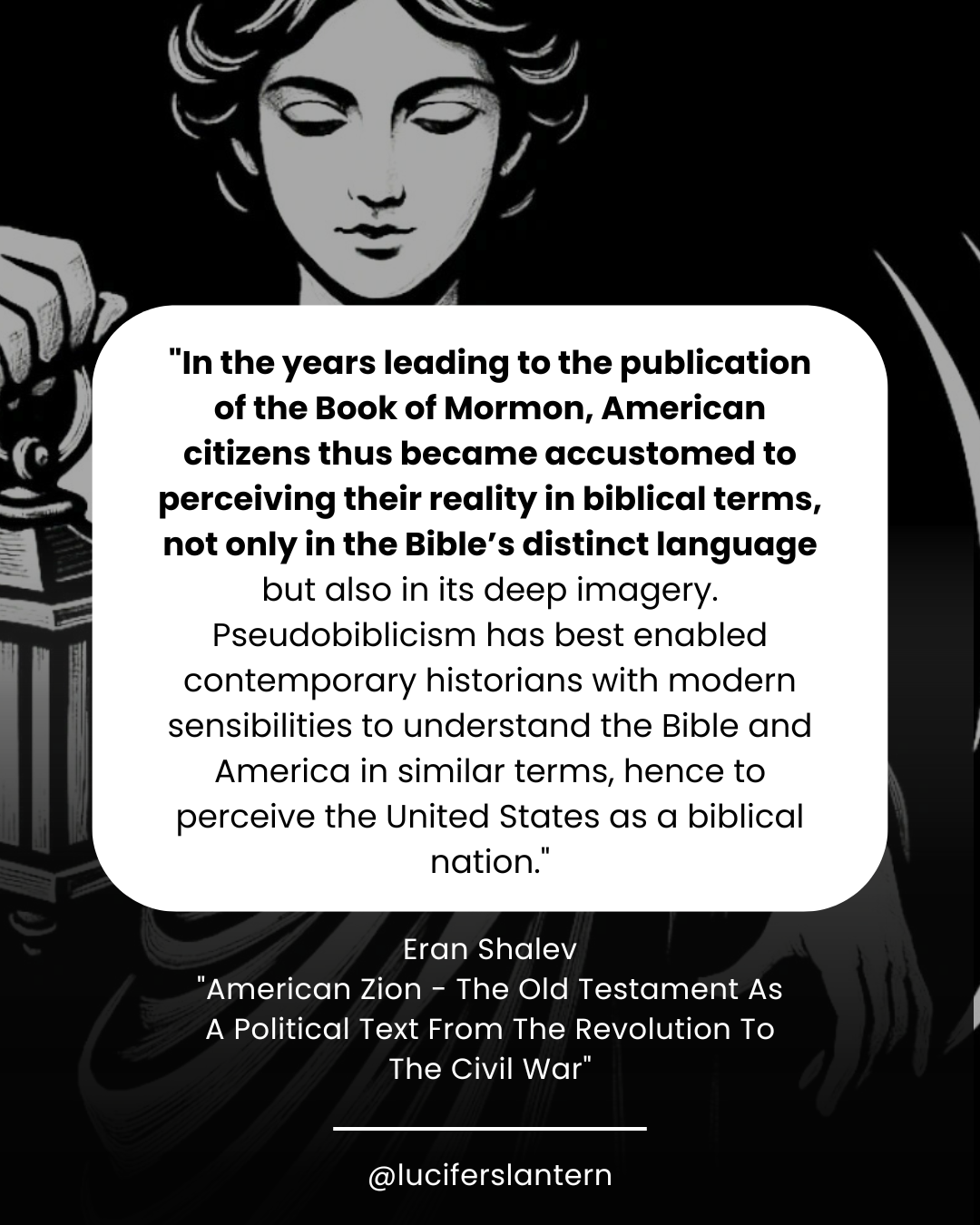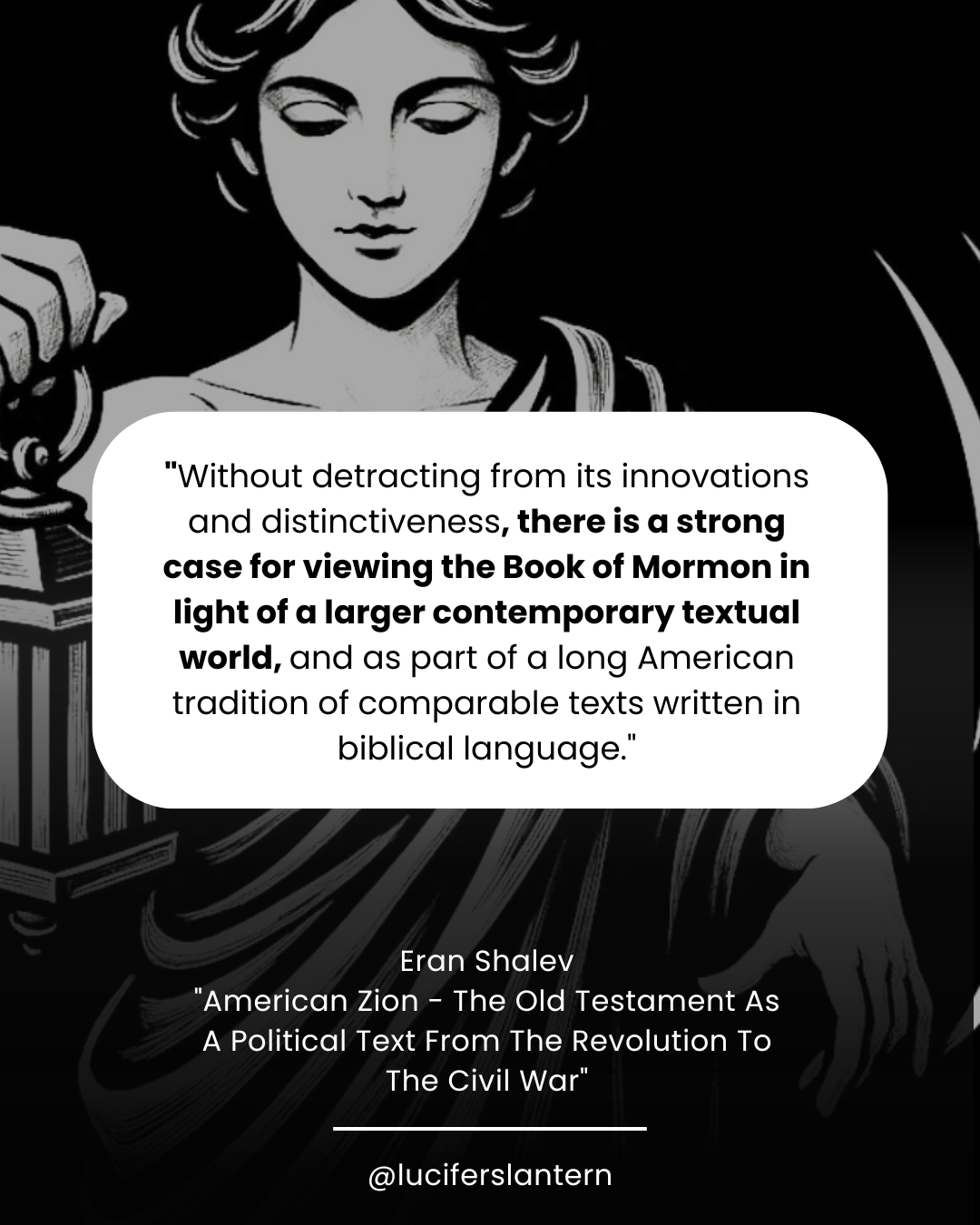The Book of Mormon presents America as a chosen land which was set apart, protected, and central to God’s plans. From the opening chapters, the narrative places its events on a continent prepared by God for righteous people. Lehi, the founding patriarch, is told that his family is being led to a "promised land" where those who serve God will prosper and those who rebel will perish.
This idea repeats throughout the book. America is portrayed as a land of liberty and divine inheritance, meant to be free from kings and preserved for the sake of righteousness. This connection between sacred land and sacred purpose wasn’t unique to the Book of Mormon. It reflected a broader pattern in early American thinking, where many saw their national story through a biblical lens. The book, American Zion by Eran Shalev (affiliate link) looks at the strong influence of the Old Testament on early American thought. From the Revolution to the Civil War, many Americans used the Hebrew Bible to understand their identity, their purpose, and their future.
This became part of how the country explained its founding, justified its politics, and told its story. He demonstrates that early Americans saw themselves as a chosen people, and reflected this perception through biblical language. They believed they had escaped oppression and were building a righteous nation.
In the early 1800s, some writers started using the language of the King James Bible to tell American stories. They used its structure and vocabulary to frame their message. These weren’t religious texts, they were written histories or political statements told in scriptural form. Shalev refers to this genre of writing as psuedobiblicia. Shalev argues that the Book of Mormon was the pinnacle of this literary trend.
The Book of Mormon took familiar biblical language and applied it to the American story. The themes of covenant, judgment, and prophecy were already tied to American identity. Shalev’s work helps explain why the Book of Mormon felt credible and powerful to its early audience.
Later, this Old Testament framework became a source of conflict in American discourse. As the country split over slavery, people on both sides used the Bible to defend their position. Some focused on stories of liberation. Others cited laws and social orders in scripture. The Bible remained central, but the unity behind its meaning began to break apart.
American Zion offers a clear picture of how the Old Testament shaped early American thinking. It explains how Americans used scripture to give their politics and history a deeper meaning. It also helps us see the Book of Mormon as a product of that world. The book did not appear in isolation. It came from a culture already writing national stories in sacred language.
Shalev does not argue for or against the truthfulness of the Book of Mormon. He simply explains the conditions that made it possible.
-------
For more insights into the potential influences of the Book of Mormon, be sure to check out my project Without the Mormon Lens






Comments
Post a Comment